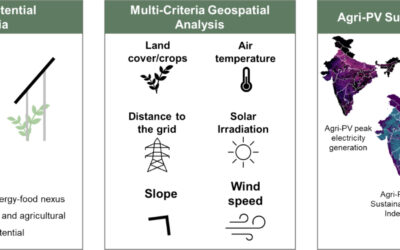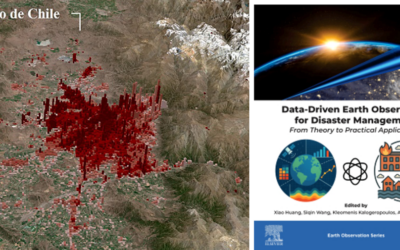A new study was published by researchers from the German Aerospace Center (DLR) in Oberpfaffenhofen, our EOR Cluster of the University Würzburg, the Technical University of Munich, the Company for Remote Sensing and Environmental Research (SLU), the Institute for Landscape Architecture of the Leibniz University Hanover, the Geological Society in Bogotá, Colombia, and the company AlpGeorisk in Donauwörth. This study proposes a new approach for the deployment of landslide early warning systems (LEWSs). A data-driven landslide susceptibility map is derived and combined with a population map to identify exposed locations. Then, a cost function is developed based on topographic and socio-economic parameters for the implementation of a LEWS. This study demonstrates that LEWSs could be installed with a budget ranging from EUR 5 to EUR 41 per person in Medellín, Colombia. Finally, recommendations for stakeholders are provided and the challenges and opportunities for successful LEWS implementation outlined.
The paper titled “Cost estimation for the monitoring instrumentation of landslide early warning systems” has just been just published in the Journal of Natural Hazards and Earth System Sciences as highlight article by Marta Sapena, Moritz Gamperl, Marlene Kühnl, Carolina Garcia-Londoño, John Singer, and Hannes Taubenböck.
Here is the abstract:
Landslides are socio-natural hazards. In Colombia, for example, these are the most frequent hazards. The interplay of climate change and the mostly informal growth of cities in landslide-prone areas increases the associated risks. Landslide early warning systems (LEWSs) are essential for disaster risk reduction, but the monitoring component is often based on expensive sensor systems. This study presents a data-driven approach to localize landslide-prone areas suitable for low-cost and easy-to-use LEWS instrumentation, as well as to estimate the associated costs. The approach is exemplified in the landslide-prone city of Medellín, Colombia. A workflow that enables decision-makers to balance financial costs and the potential to protect exposed populations is introduced. To achieve this, city-level landslide susceptibility is mapped using data on hazard levels, landslide inventories, geological and topographic factors, and a random forest model. Then, the landslide susceptibility map is combined with a population density map to identify highly exposed areas. Subsequently, a cost function is defined to estimate the cost of LEWS monitoring sensors at the selected sites, using lessons learned from a pilot LEWS in Bello Oriente, a neighbourhood in Medellín. This study estimates that LEWS monitoring sensors could be installed in several landslide-prone areas with a budget ranging from EUR 5 to EUR 41 per person (roughly COP 23 000 to 209 000), improving the resilience of over 190 000 exposed individuals, 81 % of whom are located in precarious neighbourhoods; thus, the systems would particularly reduce the risks of a social group of very high vulnerability. The synopsis of all information allows us to provide recommendations for stakeholders on where to proceed with LEWS instrumentation. These are based on five different cost-effectiveness scenarios. This approach enables decision-makers to prioritize LEWS deployment to protect exposed populations while balancing the financial costs, particularly for those in precarious neighbourhoods. Finally, the limitations, challenges, and opportunities for the successful implementation of a LEWS are discussed.
The full paper can be found at: https://doi.org/10.5194/nhess-23-3913-2023. The study was conducted as part of the project Inform@Risk (German Federal Ministry of Education and Research).
This paper is related to other studies of the team in the context of urbanization as well as landslides in Medellín:
• Multitemporal landslide exposure and vulnerability assessment in Medellín, Colombia (https://doi.org/10.1007/s11069-022-05679-z)
• Empiric recommendations for population disaggregation under different data scenarios (https://doi.org/10.1371/journal.pone.0274504 )
• Inform@Risk. The Development of a Prototype for an Integrated Landslide Early Warning System in an Informal Settlement: the Case of Bello Oriente in Medellín, Colombia (https://doi.org/10.5194/nhess-2023-53)
• Revealing landslide exposure of informal settlements in Medellín using Deep Learning (https://doi.org/10.1109/JURSE57346.2023.10144128)
• The growing threat: Earth Observation for reducing landslide risk from climate change (https://elib.dlr.de/188324/)
• Categorizing Urban Structural Types using an Object-Based Local Climate Zone Classification Scheme in Medellín, Colombia (https://repository.corp.at/745/)









